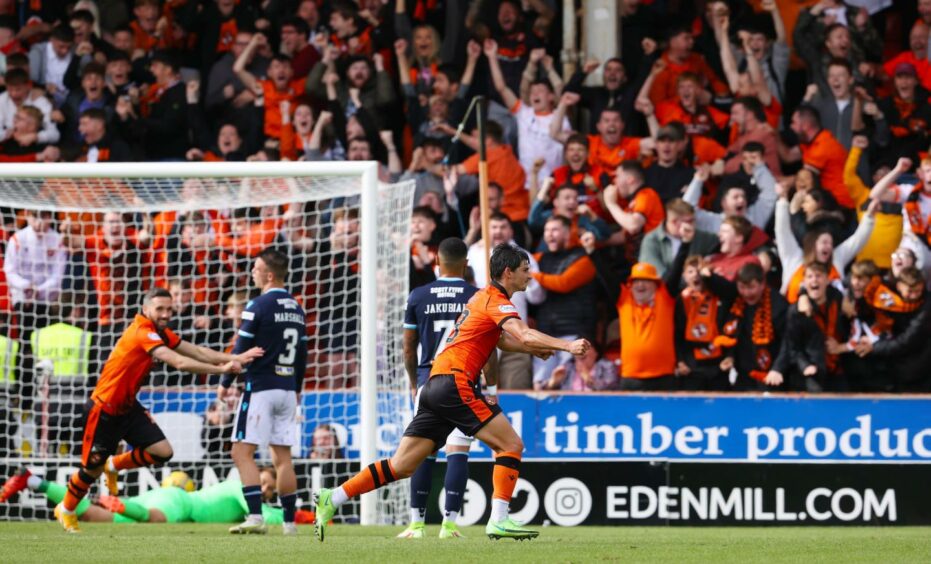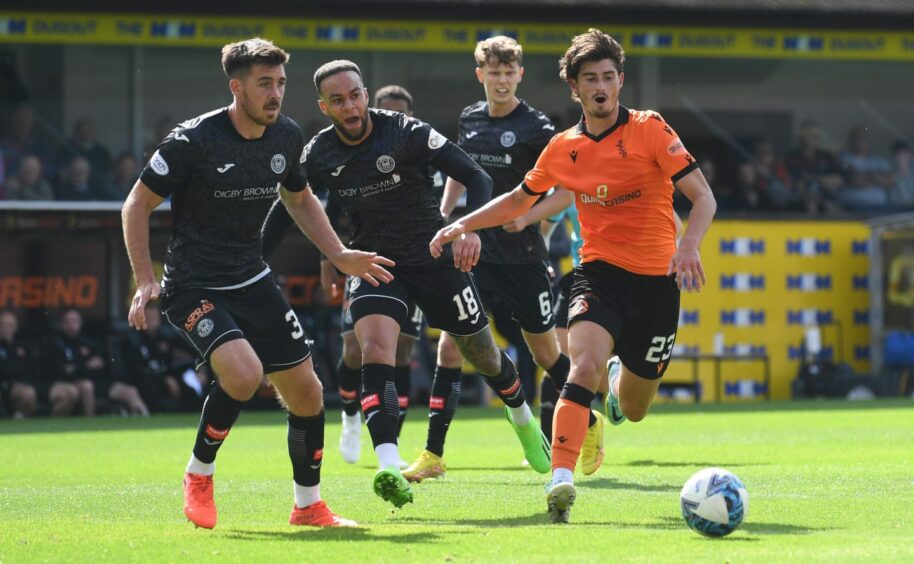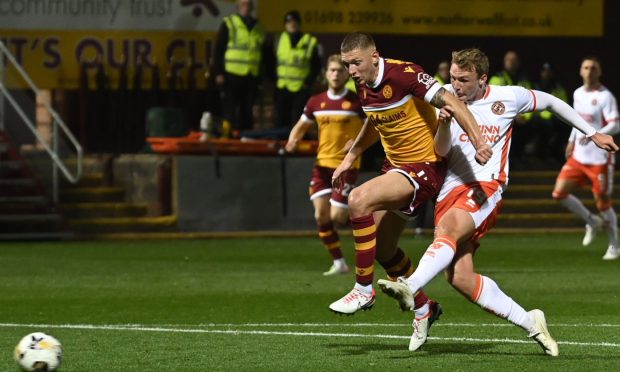Ian Harkes is No.95 in Dundee United’s all-time appearance list with 140 outings.
He has been a regular starter for FIVE different Tannadice bosses — Robbie Neilson, Micky Mellon, Tam Courts, Jack Ross and Liam Fox — and was the club’s player of the year last season.
Yet, few divide opinion quite like the American.
In a bid to find out why Harkes is so valuable to United bosses, Courier Sport has crunched the numbers in comparison to his competition for a starting berth over the last three seasons.
In the spirit of relevance, only Premiership performances have been considered — so the data spans from the start of the 2020/21 campaign to the Terrors’ most recent match against Rangers.
Central midfielders who have made 15 or more league appearances in that time have been included.
Archie Meekison (13 appearances) is an exception to that but, given he is currently in the first-team picture, is a worthwhile deviation. However, it should be noted that Meekison’s relatively small sample size means his numbers should be taken with a pinch of salt.
Jamie McGrath and Craig Sibbald’s performances are based on their time at St Mirren and Livingston, respectively, allied with their brief time at United to date.
Big moments
Harkes proved to be the man for the big occasions last season.
What a strike 🚀
Ian Harkes puts Dundee United in the lead! pic.twitter.com/5Wtafsa8xS
— Sky Sports Scotland (@ScotlandSky) September 19, 2021
A derby winner against Dundee; the goal that secured a point at Celtic Park; a New Firm decider as United defeated Aberdeen 1-0.
With four assists and four goals in the Premiership, Harkes is only behind McGrath in terms of goal contributions — and the Irishman was deployed in a more advanced role with the Buddies.
However, Harkes benefits from the fact he has played 5,618 minutes for United since their return to the top flight.
That is considerably more time in which to make his mark than Dylan Levitt (2,553), Peter Pawlett (3,034), Meekison (814), Sibbald (3,010) and Jeando Fuchs (3,027).
Calum Butcher did not either assist or score a Premiership goal in his 3,617 league minutes for the Terrors.
Defensive security
From this point onwards, each metric will be presented on a per/90 minutes basis, in order to account for that difference in the amount of appearances, unless otherwise stated.
With United visibly lacking a specialised combative midfielder, it is imperative that every member of the engine room is able to contribute to the cause defensively.
A major error against Rangers — handing possession straight to James Tavernier, leading to the Light Blues’ opener — was a high-profile black mark against Harkes’ name in that regard.
He often receives criticism for being too passive and insufficiently aggressive.
Is that fair?
Harkes is adept at winning his personal battles. Of those still at United, only McGrath wins more duels.
However, McGrath and Levitt both win possession with more regularity. As did, predictably, Butcher and Fuchs.
Fuchs, Meekison, Sibbald and Butcher — all of whom are generally deployed deeper than Harkes, it should be said — make more tackles than the former DC United man.
Circulating possession
There can be little doubt that Harkes is a technically sound, gifted passer of the ball.
Only Levitt makes more successful passes than Harkes, while — of the current squad — only the Wales international and McGrath enjoy more touches.
Levitt, McGrath and Pawlett all complete more successful passes into the final third as United seek to advance attacks.
But Harkes’ possession lost percentage (measured by Opta as a percentage of a player’s overall touches) is very respectable.
In the final third
As illustrated by his goal contributions in the Premiership, Harkes can be considered an effective presence in the final third on his day.
He is most definitely not shot-shy, topping that particular metric with 1.3 efforts per/90.
However, a conversion rate of just 4.9% speaks to a relative lack of efficiency. By comparison, Levitt’s conversion rate is an impressive 20%.
Harkes is second only to McGrath in terms of chances created solely from open play, ahead of the much-lauded Levitt and level with Pawlett, who often enjoys the benefit of playing higher up the pitch.
When considering the overall picture, however, he slips behind Pawlett and Levitt.
The question is: with competition hotting up — Sibbald is understood to be training well and Meekison shone for Scotland under-21s — will Harkes still be among the first names on the team sheet when St Johnstone visit Tannadice on Saturday?













Conversation